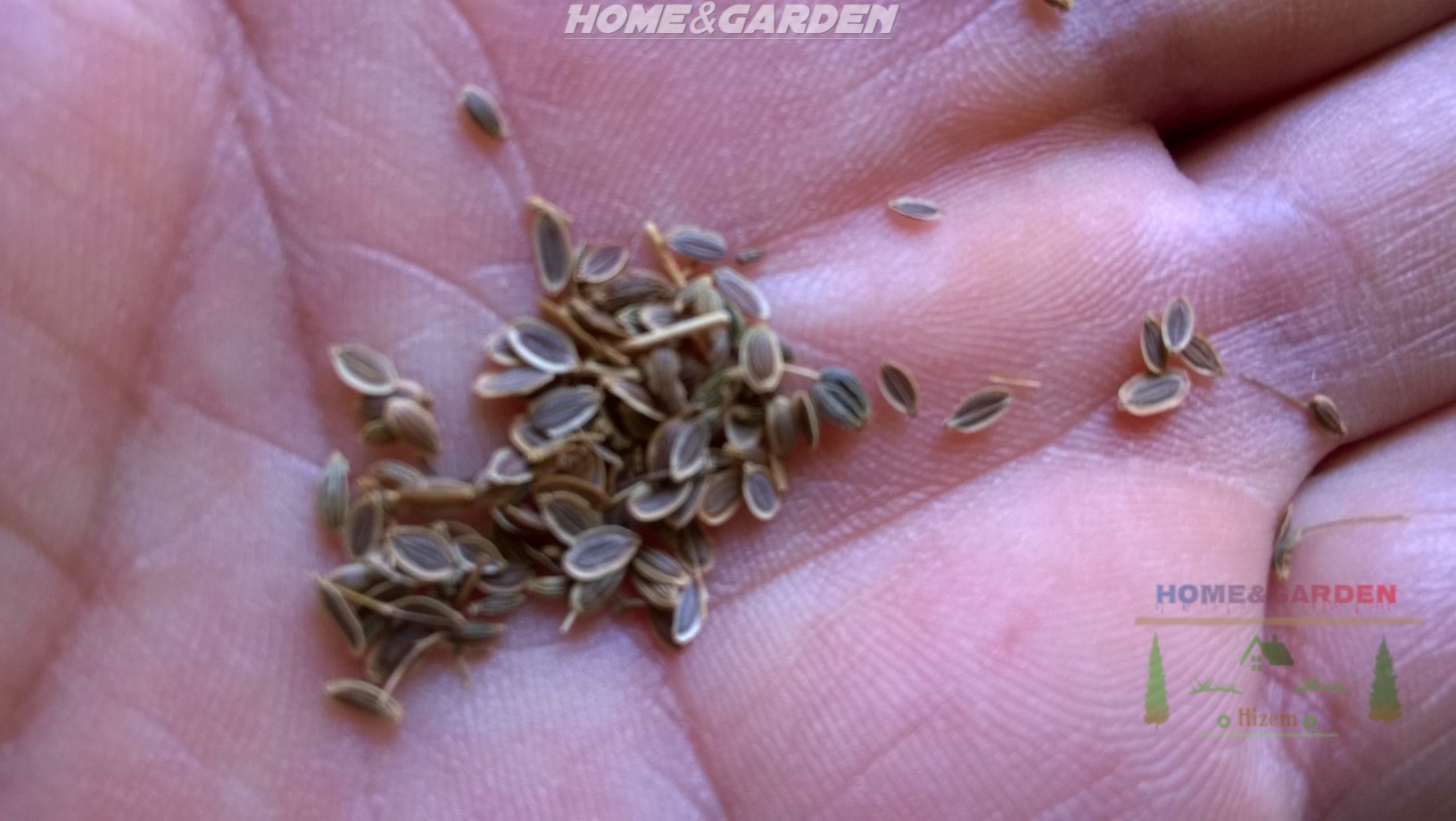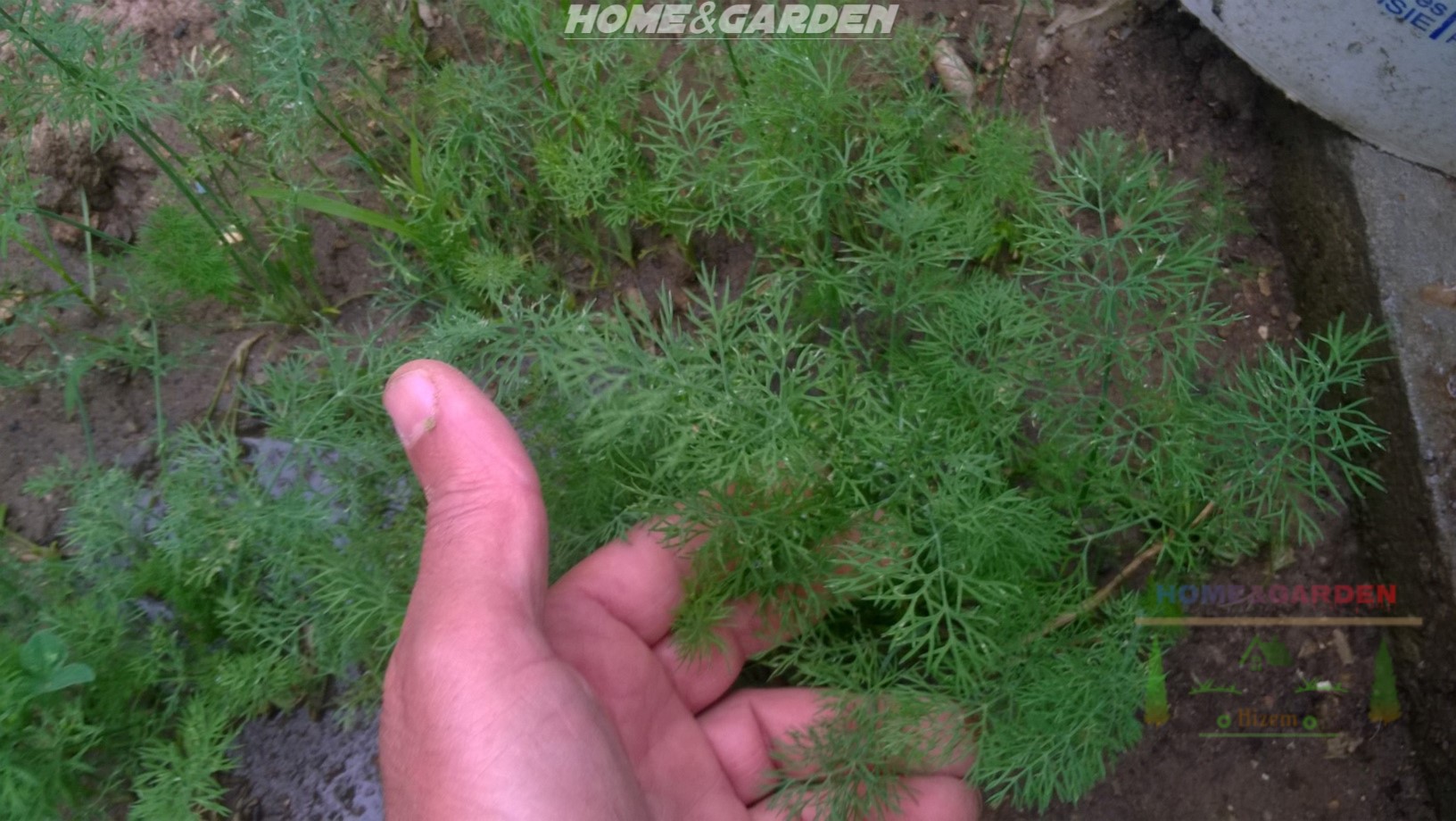Dill Description
Dill is a warm-season biennial herb that grows about 2 to 4 feet tall. Dill plant has finely cut, feathery blue-green leaves, a top hollow stems with green and white stripes. The plant have small greenish-yellow flowers that blooms on a flat-topped clusters from summer to autumn. The umbels of yellow flowers attract numerous beneficial insects to the garden. The seeds are flat, oval, with a light-brown color.
Dill is easy to grow and produces lots of aromatic leaves. By Following my simple tips you will enjoy growing this aromatic plant, and harvesting it's fresh aromatic leaves!
You Can Buy Organic Dill Seeds From HERE!
How to Grow Dill
It’s best to plant your dill seeds after all danger of frost has passed. You can start sowing dill seeds directly in the ground from April through May. As dill does not transplant well, it’s best to plant the seeds directly into the soil where you want them to grow.
Preparing the Soil:
Add a well aged compost to the garden before you plant your dill. Dill grows best in well-drained soil, and adding compost to the soil can help prevent standing water.
Planting the Seeds:
. Plant the seeds so that they’re about 1⁄4 in (0.64 cm) deep and 18 in (46 cm) apart.
. Rake gently the soil over the seeds and water.
. Keep the soil evenly moist while seeds are germinating.
. Dill seedlings will appear after about 10-14 days.
. After two weeks, thin out the seedlings so that you keep only one plant every 12–18 in (30–46 cm).
. keep always the strongest seedlings, and pull up any which seem weak or damaged.
Thinning out your dill seedlings will ensure that the plants have plenty of room to grow.
. Once dill plants start growing, they need about 1 to 2 inches of water to thrive.
. Use a garden shears to snip off the top of the plant once it reaches 8 in (20 cm). This will help direct the plant's nutrients outwards, rather than upwards, which will encourage the dill to become bushier and to develop more leaves.
Tips:
Sow additional seeds every 3-4 weeks for a continuous fresh harvest of dill. If you want to continue to enjoy fresh dill all through the summer and fall, you can continue planting new seeds every few weeks until about 3 months before the first frost. But if you don't use a lot of dill at one time, just only plant a few seeds first, then a few more seeds a few weeks later. This will help ensure you don't end up with a huge crop all at once.
Dill Plant Care
If your garden soil is rich in organic matter, dill should require no additional fertilizer. By Keeping the soil slightly lean will produce more aromatic plants.
Allow the soil to dry between watering. Dill doesn’t like too much water.If you over-water the dill plant, it may turn yellow.
. Keep planting beds weed free.
. For prolonged leaf growth, pinch out early flowers.
. For prolonged leaf growth, pinch out early flowers.
Harvesting Dill Leaves
You can begin harvesting the tasty aromatic leaves once plants reach 15cm (6″) tall. Regularly trim off the desired amount of leaves you need for cooking.
Harvesting Dill seeds
To harvest dill seeds, allow the plant to grow without trimming until it goes into bloom. Once the plants go into bloom, they will stop growing leaves, so make sure that you don’t harvest any leaves from that plant. The dill flower will fade and will develop the seed pods. About 10 weeks after sprouting the seed heads begin to form. When the first seeds have turned brown, cut the whole flower head off and place in a paper bag. Gently shake the bag. The seeds will fall out of the flower head and seed pods. Once you’ve harvested the seeds, let them dry slowly in a shaded, well-ventilated area for a week or two. Then when they are completely dry you can store them in air-tight containers until you’re ready to use them. Remember that if they’re not completely dry, you risk mould growing on the seeds in storage and you will loose them!
Dill Companion Planting
Dill is a good companion for cucumbers, lettuce, onions, and improves the health of cabbages and other Brassicas. This aromatic plant attracts ladybugs, and the parisitoid wasps that feed on garden caterpillars. At the same time it repels aphids and spider mites.
Find great deals on Amazon for Dill Seeds, and shop with confidence!
Enjoy growing this easy to grow staple of the herb garden!
Please let us know your thoughts, experiences, or questions in the comments below. If you like this, you can share with your friends!
Some of the links to products on this site are affiliate links. I do make a small commission (at no extra cost to you) from these sales.









